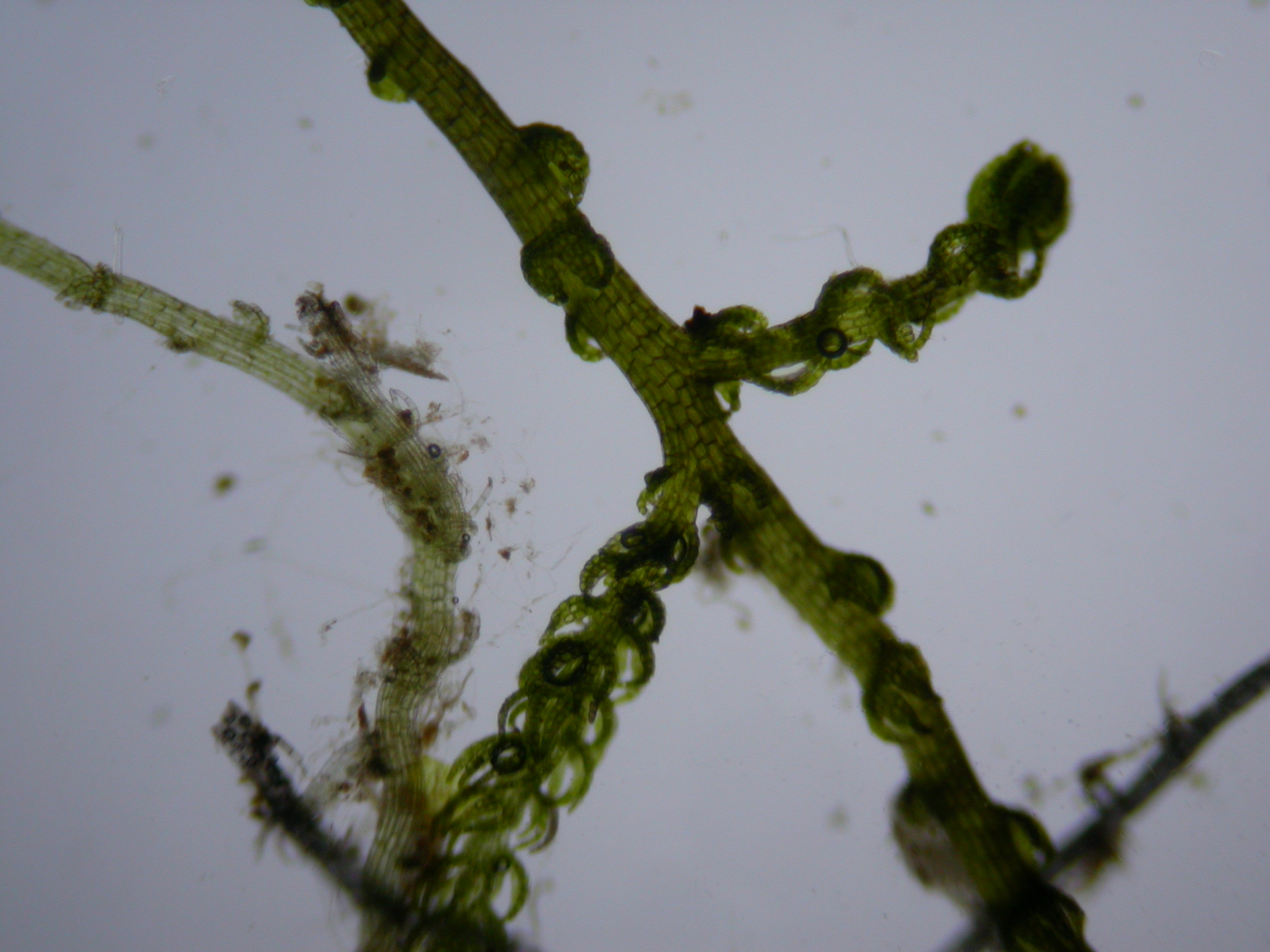Kurzia pauciflora
(Kurzia pauciflora)

Description
These very slender, widely branched plants have shoots 0.25-0.5 mm wide, and very small (about 0.25 mm long), often distant leaves. The whole plant resembles slightly frayed green thread. The leaves are divided almost to the base into 3 or 4 narrow lobes. Underleaves are similar, but slightly smaller. Plants often have leafless, vertical shoots which penetrate the substrate. The species can only be reliably identified when fertile by differences in the perianths and male bracts. These are larger than the leaves, but are often hard to find, and too small to be fully examined with a hand lens in the field. All three species are dioicous. K. pauciflora is dull, dark green and often irregularly pinnately branched. K. sylvatica and K. trichoclados are usually yellowish- or brownish-green and regularly pinnately branched. K. trichoclados can be identified in the field when it grows in thick, scented mats. The other two do not form such thick mats and are never scented, but be aware that mats of K. sylvatica can sometimes have the scented Lophocolea bidentata growing through them. Lepidozia species (pp. 80-81) also have 3- to 4-lobed leaves and underleaves, but they are more robust plants, often with more crowded leaves, the leaves are less divided (to halfway) and the lobes are wider than Kurzia. Blepharostoma trichophyllum (p. 77) is a pale yellow-green plant with even more finely divided leaves than in Kurzia. Telaranea species (p. 79) also have very slender leaf lobes, and are rare (except in west of Ireland); the almost translucent stems make the plants glisten. Cephaloziella species (pp. 104-108) can be as slender as Kurzia, but the leaves are bilobed. Kurzia species grow in bogs, wet heaths, flushes, fens and wet woodland, often as small patches amongst Sphagnum and other mosses, or in mats on wet peat or rocks. Plants in the wettest parts of bogs are usually K. pauciflora. Plants on well-drained, peaty sites are usually K. sylvatica or K. trichoclados. Peat overhangs in Scotland often support abundant K. trichoclados.
Taxonomic tree:







